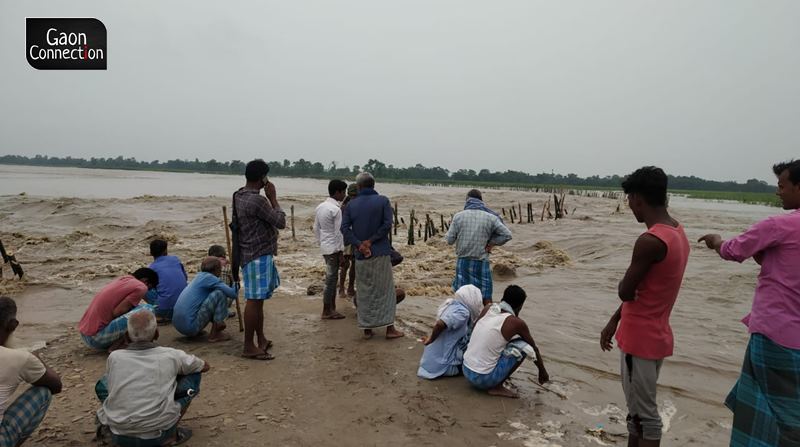While a large number of Indian states, such as Madhya Pradesh, Rajasthan, Bihar and West Bengal, are facing extreme floods triggered due to heavy monsoon rainfall, a new study published in Nature journal shows “an increase of 20 to 24 per cent in the proportion of the global population exposed to floods, ten times higher than previous estimates”. This increase has been recorded since the year 2000.
What is more worrisome is the fact that the US-based researchers of this landmark study, who used daily satellite imagery at 250-metre resolution, have pinned India as the country with the largest population at the highest risk of floods, followed by China, Bangladesh and Pakistan (see map: Population exposed to flood).
This study, titled ‘Satellite imaging reveals increased proportion of population exposed to floods’, was published yesterday on August 4.
Based on the satellite imagery, researchers studied 913 large flood events from 2000 to 2018 and found a total inundation area of 2.23 million square kilometres, with 255-290 million people directly affected by floods. They have estimated that the total population in locations with satellite-observed inundation grew by 58-86 million from 2000 to 2015, which translates to an increase of 20 to 24 per cent in the proportion of the global population exposed to floods.
Commenting on the study, Roxy Mathew Koll, climate scientist with the Indian Institute of Tropical Meteorology, Pune, told Gaon Connection: “The fact that an increasingly large population is at high risk of severe weather events like floods indicates the urgency with which we need to act. These floods and cyclones are projected to increase further into the future as countries are not curbing their emissions.”
Talking specifically about India, the scientist said: “We need to urgently map the risks across India due to the changing climate. Any kind of development should be planned based on an assessment of these risks – whether it is public or commercial infrastructure or even a farm or a house.”
Authors of the study published in Nature also warn that climate change projections for 2030 indicate that the proportion of the population exposed to floods will increase further. And if the ongoing floods in India is something to go by then this recent study should act as a serious warning bell.
Water-related disasters rising: World Meteorological Organization
While the study published in Nature has focused on floods, a comprehensive analysis by the World Meteorological Organization (WMO) points out that water-related hazards dominate the list of disasters in terms of both the human and economic toll over the past 50 years.
The WMO’s assessment, released last month on July 23, shows that of the top 10 disasters worldwide, the hazards that led to the largest human losses during the period 1970-2019 have been droughts (650 000 deaths), storms (577 232 deaths), floods (58 700 deaths) and extreme temperature (55 736 deaths). With regard to economic losses, the top 10 events include storms (US$ 521 billion) and floods (US$ 115 billion).
A detailed report on this analysis — WMO Atlas of Mortality and Economic Losses from Weather, Climate and Water Extremes (1970-2019) – will be published next month in September. The data released so far show that over the 50-year period, weather, climate and water hazards accounted for 50 per cent of all disasters (including technological hazards), 45 per cent of all reported deaths and 74 per cent of all reported economic losses at global level.
“Weather, climate and water-related hazards are increasing in frequency and intensity as a result of climate change. The human and economic toll was highlighted with tragic effect by the torrential rainfall and devastating flooding and loss of life in central Europe and China in the past week,” said WMO Secretary-General Petteri Taalas, while releasing the assessment last month.
He went on to say that “increasingly, heavy rainfall episodes also bear the footprint of climate change. As the atmosphere gets warmer it holds more moisture which means it will rain more during storms, increasing the risk of floods”.
According to Taalas, “No country – developed or developing – is immune. Climate change is here and now. It is imperative to invest more in climate change adaptation, and one way of doing this is to strengthen multi-hazard early warning systems.”



















